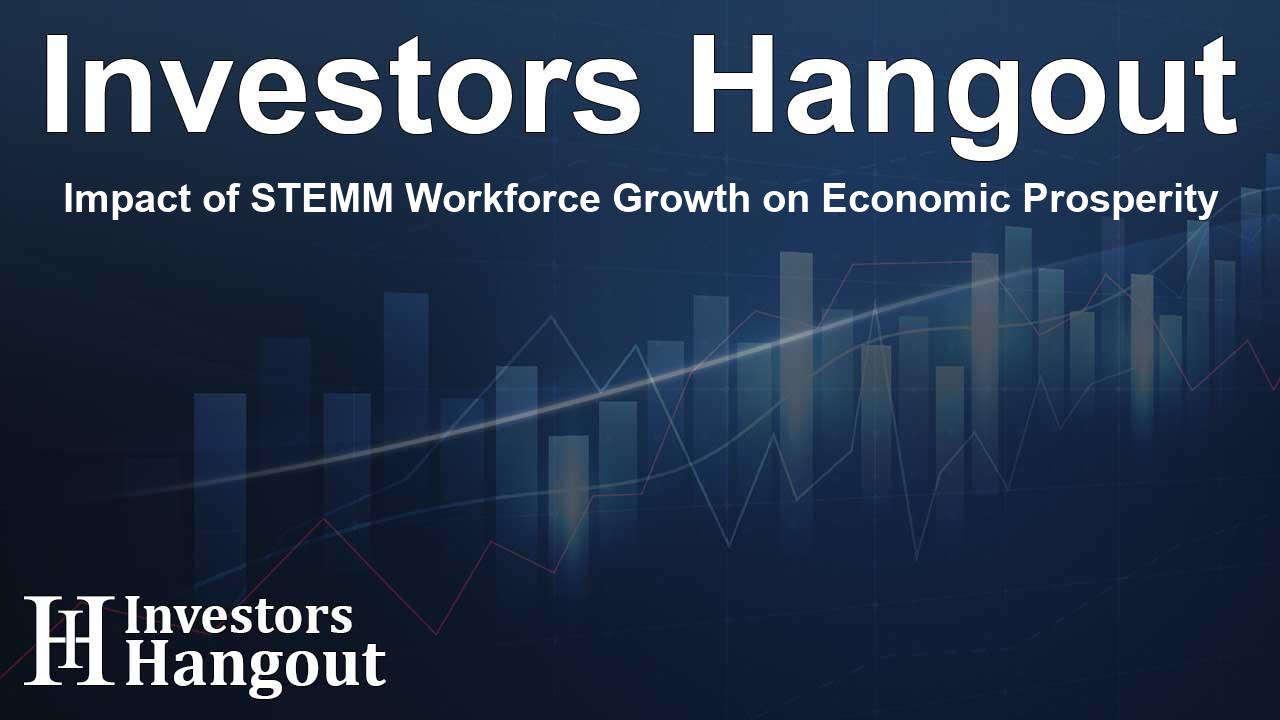Impact of STEMM Workforce Growth on Economic Prosperity

Significant STEMM Workforce Growth in the U.S.
In recent years, the workforce employed in science, technology, engineering, mathematics, and medical-related fields has seen remarkable growth. Recent studies indicate that more than 73.6 million Americans are now engaged in STEMM jobs. This represents an impressive increase of 9.7% over just two years, showcasing the crucial role that these professions play in the nation’s economy.
Economic Contributions of STEMM Professionals
The economic impact study conducted highlights that professionals in STEMM fields constitute approximately 34% of the U.S. workforce. Moreover, they are responsible for an impressive 39.2% of the national gross domestic product, translating into $10.8 trillion. This statistic underscores the value these workers contribute to the economy.
Educational Backgrounds in STEMM Fields
Interestingly, the data reveals that a significant portion of the STEMM workforce, about 53%, do not possess a bachelor’s degree. Instead, many have high school diplomas or general equivalency credentials, which is critical information in discussions about education and workforce development. This suggests that pathways to STEMM careers are broader than traditionally assumed, and numerous opportunities exist for those who may not follow a conventional higher education route.
Sales and Income Generated by STEMM Professionals
Not only do STEMM professionals contribute greatly to the economy, but they also generate substantial revenue through sales output totaling over $20 trillion. Additionally, their efforts yield approximately $6.9 trillion in labor income along with significant federal and state tax revenues, which are vital for funding public services and infrastructure.
Growing Demand in STEMM Careers
The future of STEMM employment appears exceptionally promising. Projections anticipate a 10.5% increase in STEMM job opportunities over the next decade. This burgeoning demand highlights the need for a committed investment in education and training to prepare the upcoming workforce.
Pathways to STEMM Careers
According to experts, increased collaboration among educators, businesses, and policymakers is essential for developing entry points into STEMM careers. This includes initiatives like apprenticeships and internships that facilitate the transition into these roles. Ensuring accessibility to STEMM opportunities will enable more individuals to enter these critical fields, thus supporting ongoing economic growth and innovative advancements.
Geographic Distribution of STEMM Workers
The study identifies regions with a notably higher concentration of STEMM professionals, which reflects varying local industries' demands. Areas such as the District of Columbia, Michigan, and Massachusetts rank among the top locations, illustrating the correlation between geographical factors and STEMM employment.
Broadening the Definition of STEMM Professionals
It is also vital to recognize the diverse range of individuals who occupy STEMM roles. The scope extends beyond typical perceptions of the field to include agriculturists, electricians, and various technicians who contribute their skills in science and math-related tasks.
Strategic Recommendations for Workforce Development
According to a spokesperson from Science is US, reinforcing support for STEMM professions and prioritizing their development is necessary for sustained economic success. Strengthening federal research support and workforce stability will enhance the nation's capacity to attract talent from across the globe.
Conclusion
This extensive study outlines the essential role that STEMM professionals play in shaping the future of the economy. With continual investment in training and education, there exists great potential for growth and innovation within these fields.
Frequently Asked Questions
What percentage of Americans work in STEMM jobs?
Approximately one third of Americans, representing 34% of the workforce, are employed in STEMM jobs.
How much do STEMM professionals contribute to the GDP?
STEMM professionals account for about 39.2% of the national GDP, equivalent to $10.8 trillion.
Is a bachelor's degree necessary for a career in STEMM?
No, over 53% of STEMM professionals do not hold a bachelor's degree, showcasing diverse career pathways.
What is the job outlook for STEMM careers?
The demand for STEMM jobs is projected to grow by 10.5% in the next ten years, indicating strong future opportunities.
What are some examples of STEMM occupations?
STEMM occupations include data scientists, medical and health services managers, and various technical roles such as electricians and agricultural technicians.
About The Author
Contact Logan Wright privately here. Or send an email with ATTN: Logan Wright as the subject to contact@investorshangout.com.
About Investors Hangout
Investors Hangout is a leading online stock forum for financial discussion and learning, offering a wide range of free tools and resources. It draws in traders of all levels, who exchange market knowledge, investigate trading tactics, and keep an eye on industry developments in real time. Featuring financial articles, stock message boards, quotes, charts, company profiles, and live news updates. Through cooperative learning and a wealth of informational resources, it helps users from novices creating their first portfolios to experts honing their techniques. Join Investors Hangout today: https://investorshangout.com/
The content of this article is based on factual, publicly available information and does not represent legal, financial, or investment advice. Investors Hangout does not offer financial advice, and the author is not a licensed financial advisor. Consult a qualified advisor before making any financial or investment decisions based on this article. This article should not be considered advice to purchase, sell, or hold any securities or other investments. If any of the material provided here is inaccurate, please contact us for corrections.
